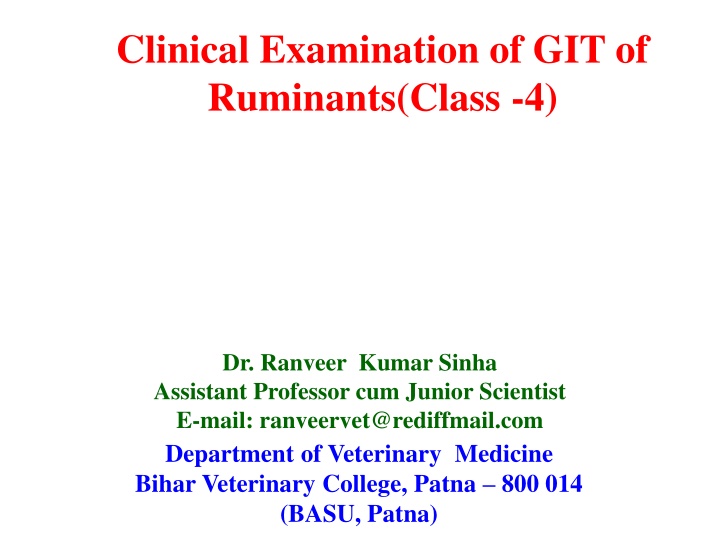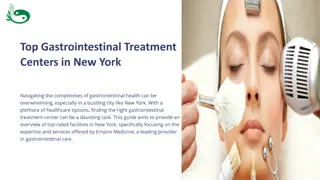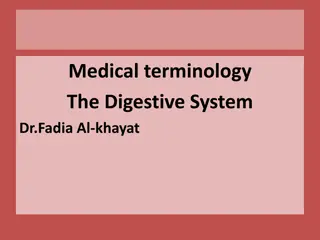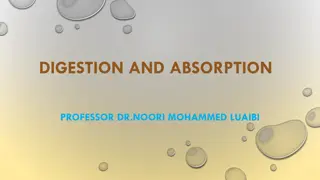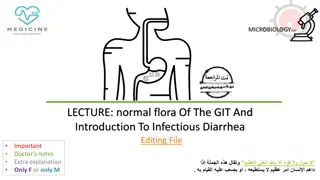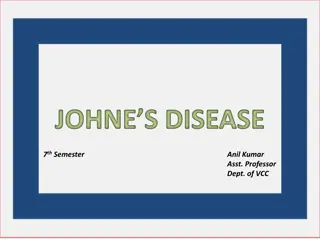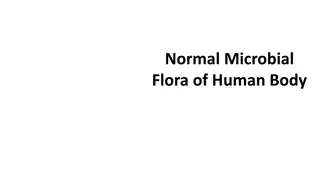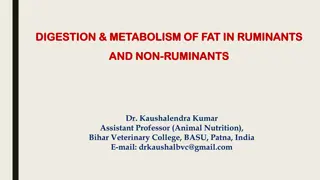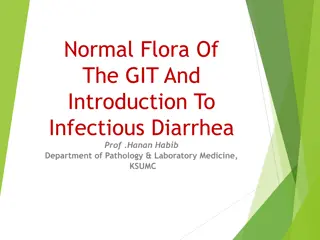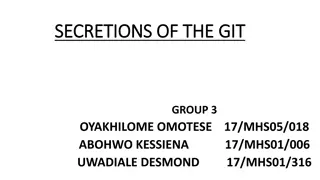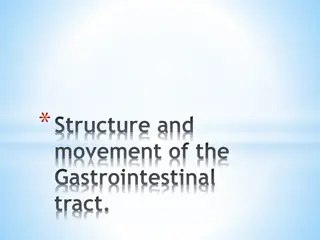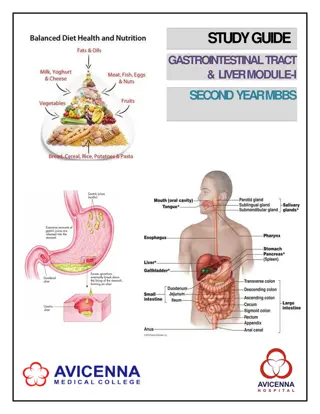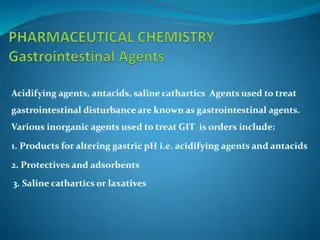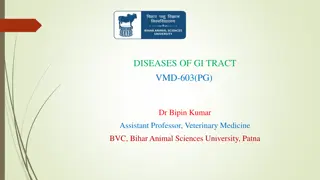Clinical Examination of Gastrointestinal Tract in Ruminants - Summary and Observations
Detailed examination of the gastrointestinal tract (GIT) in ruminants is crucial for diagnosing various diseases. Dr. Ranveer Kumar Sinha, an Assistant Professor cum Junior Scientist at Bihar Veterinary College, provides insights into the clinical examination, anatomy, history, and observations related to ruminant health. The content emphasizes the importance of assessing signs like abdominal pain, cud dropping, ruminal tympany, and other key indicators. It also covers abnormalities in the mouth, including issues with swallowing, tongue movement, and buccal mucosa. Understanding these aspects aids in detecting diseases such as salmonellosis, johne's disease, and more, facilitating effective veterinary care.
Download Presentation

Please find below an Image/Link to download the presentation.
The content on the website is provided AS IS for your information and personal use only. It may not be sold, licensed, or shared on other websites without obtaining consent from the author.If you encounter any issues during the download, it is possible that the publisher has removed the file from their server.
You are allowed to download the files provided on this website for personal or commercial use, subject to the condition that they are used lawfully. All files are the property of their respective owners.
The content on the website is provided AS IS for your information and personal use only. It may not be sold, licensed, or shared on other websites without obtaining consent from the author.
E N D
Presentation Transcript
Clinical Examination of GIT of Ruminants(Class -4) Dr. Ranveer Kumar Sinha Assistant Professor cum Junior Scientist E-mail: ranveervet@rediffmail.com Department of Veterinary Medicine Bihar Veterinary College, Patna 800 014 (BASU, Patna)
History Vaccination and anthelmintic record Recent outbreaks of disease e.g. salmonellosis Endemic disease like johne s disease Recent changes in diet or management Introductions of new animal Time of onset, the duration, number affected and the severity and the signs of disease observed
Observations at a distance Abdominal pain: Straining in attempts to defecate Rate of eructation, regurgitation In chronic:- low body condition score and loss of weight kicking at the abdomen Get up and down movements with grunting
Observations at a distance Dropping of the cud Ruminal tympany Sunken eyes Increased respiratory rate(metabolic acidosis) Reduction in the quantity and a change in the faces Jaundice (non-pigmented areas of the skin such as the udder) Distension and changes in the silhouette of lateral contours of the abdomen.
Examination of Mouth Difficulty in opening mouth Tetanus & Low Mg level Damage to the temperomandibular joint Degenerative changes affecting articular surface of joints Inability to co-ordinate lip movements : 7th cranial (facial) nerve Inability to move the tongue :12th cranial (hypoglossal) nerve(alkaloid toxicity, botulism or in listeriosis) Inability to swallow : 9th cranial (glossopharyngeal) nerve &10th cranial (vagus) nerve (local damage to nerves by abscess or tumour formation) Buccal mucosa: diphtheritic membranes which are visible adjacent to the cheek teeth in some cases of calf diphtheria (necrotic stomatitis) vesicles of foot-and mouth disease Dental pad: bovine papular stomatitis, BVD FMD wooden tongue caused by Actinobacillus lignieresii Paralysis of the tongue is seen in cases of botulism
Examination of the left abdomen Assessment of the rumen and reticulum To check for evidence of a left displaced abomasum. Rumen and reticulum In normal animal digital pressure should not leave a lasting impression once palpation ceases In vagal indigestion there may be rumen overfill with fibre and an impression of a fist pushed into the sublumbar fossa will remain following withdrawal Rumen movements Auscultation by stethoscope (weak contractions can be detected Rasping or crushing sound or as crackling crescendo decrescendo rolling thunder (persist for 5 to 8 seconds) Auscultation of reticular contractions: auscultation over ribs 6 or 7 ventrally on the left side
Changes in rumen motility Hypomotility (less than one movement every2 minutes) Rumenostasis may cause a free gas bloat and is associated with a number of conditions including milk fever, carbohydrate engorgement (ruminal acidosis) and painful conditions of the abodmen Hypermotility (more than five movements every 2 minutes) is less common and conditions Percussion of the left abdominal wall: Resonance over the gas in the dorsal sac of the rumen
Examination of right side of the abdomen Gravid uterus Abomasum Intestines Liver Distension of the right sublumbar fossa Right-sided abomasal displacement Caecal dilatation and/or torsion vagal indigestion Omasal impaction Abomasal impaction
Intestines Normal intestinal sounds can be heard intermittently in the right ventral quadrant (occur every 15 to 30 seconds) Repeated peristaltic sounds may indicate intestinal hyper motility Splashing sounds caused by excessive fluid in the intestines may be detected by ballottement and succession (enteritis, ruminal acidosis or intestinal obstruction)
Examination of the feces Amount Mature cattle generally pass some feces every 1.5-2 hours, amounting to a total of 30- 50 kg/day in 10-24 portions Reduction in the bulk of feces: decrease in feed or water intake a retardation of the passage through the alimentary tract Diarrhea: the feces are passed more frequently and in greater amounts than normal and contain a higher water content (>90%) than normal
Absence or Scant Feces Failure to pass any feces for 24 hours or more is abnormal and the continued absence of feces may be due to a physical intestinal obstruction Paralytic ileus of the intestines due to peritonitis or idiopathic intestinal tympany also result in a marked reduction in feces, sometimes a complete absence, for up to 3 days
